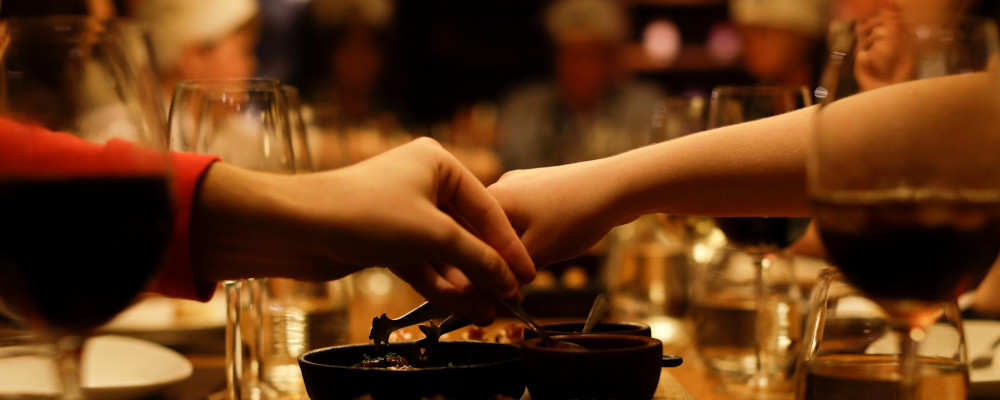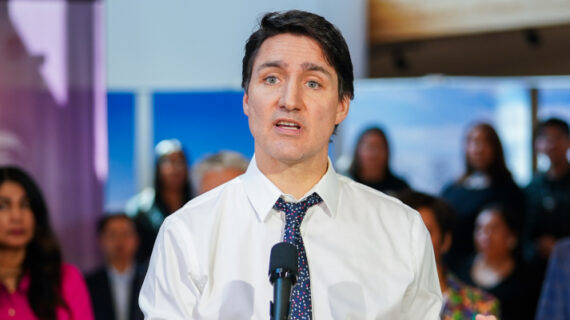Refosco is one of the wines that if I see it on a wine list or on a store shelf I will almost always order. This is not because Refosco, which (to be precise) is really the name of the grape that makes the wine, is particularly special, but rather because it’s scarce outside of Italy. It’s like recognizing a friendly acquaintance at a party. This person won’t be your best friend, but they’ll provide some pleasant company for a while and be a refreshing change from the usual suspects.
Refosco comes from Friulli-Venezia Giulia in the northwest corner of Italy, which borders Austria and Slovenia. The proper name for the grape and the wine is Refosco dal Peduncolo, which distinguishes the Venetian variety of the Refosco (“red stalk”) family from others in the neighbouring lands of the former Austro-Hungarian Empire. Refosco wines typically have a medium weight with red fruit that can go into blueberry or plum and have a pronounced acidity, which makes them food-friendly.
I bought the Valpanera Refosco dal Peduncolo Rosso Friuli DOC at my local provincial government liquor distribution monopoly for $16.95 along with a bunch of other wines on a weekend afternoon and stashed it in my cellar. I would open it to try in concert with something for dinner that might make a decent match. But what?
I’ve written before about the contradictory thinking that goes into the art of food and wine pairing. Briefly, there are three principles which could be adhered to. Opposites attract, wherein a food with one quality is balanced by wine that shows its opposite. Birds of a feather, wherein food and wine that share a similar quality harmonize. And, geographical determinism, wherein foods and wines from the same place will pair well for either historical or magical, terroir-based reasons.
All of the principles of food and wine pairing are dubious and do poorly by close examination—except when they really work. There is the contrast between alkaline oysters and a racy acidic white wine. And there is also the satisfaction of serving a braised dish with the wine in which it was cooked. There is some basic logic to the idea that chefs and home cooks would try and adapt recipes to go with the wines they had available to them over time, just as winemakers would try and make something that went well with whatever they were going to have for dinner.
If I try to pair, then I usually try to pair based on a choice between the first and second principles combined with some near iteration of the third. My application of the third tends to lean on the magical thinking aspect, but only because I am a romantic at heart. It pleases me to imagine that I am eating as well as drinking as they would from wherever the wine was grown and made.
I am not strict about geographical pairing. Country of origin will do, and a dish from the North of France might end up with a wine from the South. In my mind I get around this incongruity by pretending I am dining at a restaurant in the capital, where all the nations’ cuisines and wines commingle. (I did say the thinking was magical.)
The trouble I had with the Refosco was figuring out which nationality to lean towards. Would I go Italian in deference to Venice? Or Alpine Austrian in deference to the Hapsburgs? Or Slavic in deference to Slovenia? The wine sat in my cellar while I pondered the dilemma.
As is often the case, my wife saved the day. Our social calendar suddenly got busy, and we found ourselves eating out several times in the days after I bought the wine. She made a large tray of macaroni cheese to keep in the fridge for our teenage sons, so they could heat up a portion quickly and without much effort if they were hungry and the kitchen staff (us) were out.
What’s good for the young goose is good for the old gander. A change of schedule meant that I ended up driving a son to sports practice this week, and the two of us wouldn’t be home until after dinner time. Waiting for us was the macaroni and cheese in the oven, and when I went down to reward the chauffeur with wine at dinner, I remembered the Refosco.
Macaroni and cheese is made simply at my house with a sauce made of grated cheese and whole milk developed from a roux. This is poured on top of cooked pasta, usually (the adeptly named) “corkscrew” or cavatappi type, and put into the oven with a layer of cheese on top. It’s not complicated, but it’s rich and pleasingly mild and the perfect pairing for the Refosco by all three principles.
Opposites attract: the mild and creamy carb and cheese loaf of the baked pasta loved the fresh acidity and slightly peppery twang of the Refosco. Birds of a feather: Refosco is not, generally speaking, a very complicated wine; like the macaroni and cheese its virtue is its simplicity and the play between the cheese and cream and plummy fruit harmonized beautifully. It’s at geographical determinism where things got complicated.
Macaroni and cheese is more of a North American specialty than a Friulian dish. In fact, its popularization in the modern era is said to have originated in the early days of the American Republic, where it was developed by French chefs fleeing the terrors of their own revolution. And yet, the combination of Italian pasta and Alpine cheese and cream seemed to fit, and one could imagine the dish prepared and served with a simple table wine on a cold night in Northeastern Italy.
I’ve heard it said that today’s traditions were yesterday’s innovations that worked. A lot of food and wine marketing leans on authenticity and a sort of ever-present taste of place. There’s something to this, but little in the world truly stands still, so we can be forgiven the indulgence of a little magical thinking if it’s in aid of pleasure.





